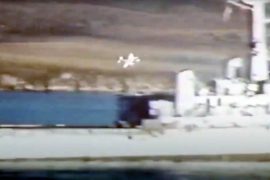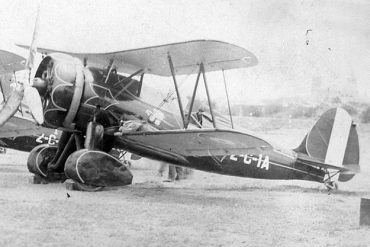The FMA Ae.M.B.1 / 2 “Bombi” holds the distinction of being the first and only bomber ever developed and produced in Latin America. It stands as a significant achievement for the Argentine Fábrica Militar de Aviones (FMA) and marked the culmination of their initial phase of producing indigenous aircraft designs. The Bombi remained in active service with the Argentine air arm until the introduction of the Avro Lancaster and Avro Lincoln aircraft.
A generation of indigenous designs
Established in 1927 on the outskirts of Córdoba City, the Fábrica Militar de Aviones -FMA- (Miltary Aircraft Factiry) aimed to replace the importation of airplanes with domestically designed models to equip the Argentine military aviation. Initially, the first models were constructed under license, such as the Avro 504 and Dewoitine D.21. However, simultaneous efforts were made to develop local designs, with the Ae.C.1 being the first successful endeavor. Subsequently, additional models were introduced, including three Ae.T.1 aircraft designed for transport purposes. These aircraft shared similar characteristics, being small, low-wing monoplanes. The Ae.T.1 stood out due to its larger size, allowing it to accommodate five passengers and two pilots, with the added capability of being transformed into a light bomber.
The Ae.T.1 aircraft, with its limited combat capabilities, was never employed as a light bomber since a more advanced and larger aircraft was in the works. This new aircraft, known as the Ae.M.B.1 “Light Bomber”, was designed to replace the aging Breguet XIX biplanes that had been in service since the late 1920s. The development of the Ae.M.B.1 began in 1932, and the construction of the first prototype started the following year. However, due to material shortages, particularly aluminum, the project experienced delays, pushing its completion to 1934. Simultaneously, progress was also made on the construction of the Ae.T.2 aircraft, a transport version of the Ae.T.1 equipped with a Wright Cyclone R-1820E1 engine. Ultimately, all the aircraft produced were designated as Ae.M.B.1 models, although it is possible that some, such as the aircraft bearing the serial number 212, were delivered without armament and used for transport or even other purposes.
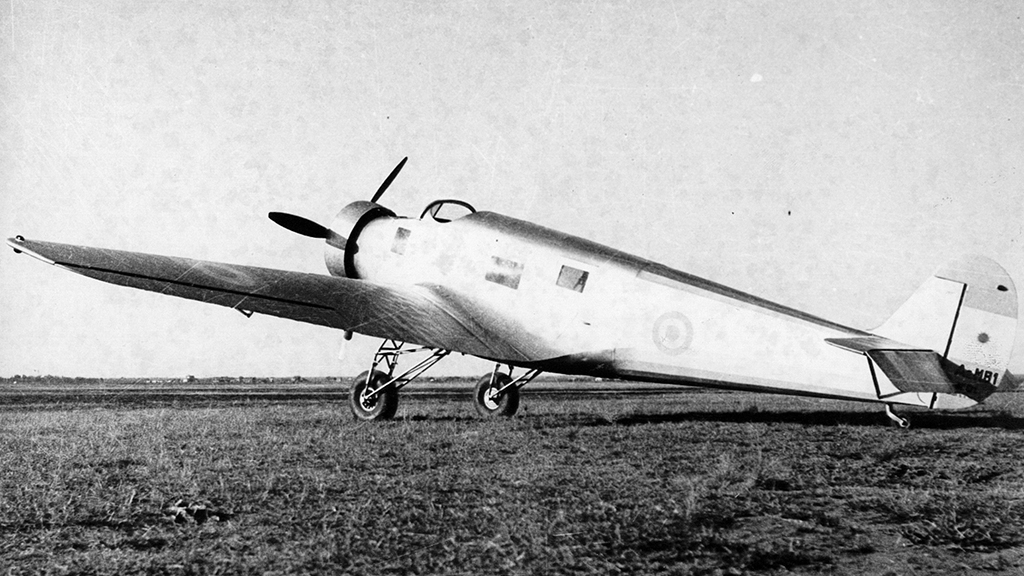
By the early 1935, the first prototype of the Ae.M.B.1 was prepared for its inaugural flight. This aircraft featured an open cockpit, low-wing design made predominantly of wood, with a cantilever monoplane configuration and fixed landing gear. Powering the aircraft was a Wright Cyclone 6R-1820F3 engine, providing 715 horsepower. The fuselage construction involved the use of Chromium-Molybdenum steel tubes covered in Duralumin for the cockpit and cabin areas, while the tail, wings, and elevators were covered in fabric.
The crew complement included a bomber, gunner, radio operator, and the possibility of accommodating a mechanic. For observation missions, the aircraft could carry two observers, and a camera could be installed on the ventral opening for the gunner’s use.
On June 9, 1935, the prototype of the Ae.M.B.1 finally made its first flight, initiating a series of tests that prompted several modifications. These included the adoption of a NACA engine ring as an initial modification, followed by a modification of the landing gear, which was now covered with wheel pants. Subsequently, the defensive armament was installed, featuring a dorsal open position equipped with two Lewis .303 British machine guns that had been loaned from a Breguet XIX.
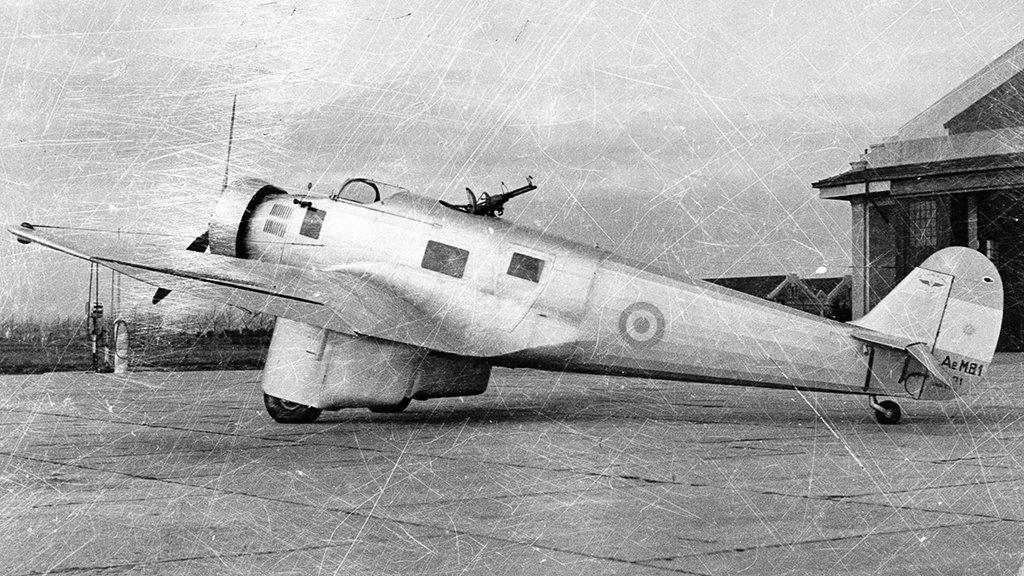
The tests conducted on the Ae.M.B.1 prototype demonstrated its favorable performance, but further modifications were deemed necessary. One notable change involved replacing the existing empennage with a new, larger one to enhance lateral control. Additionally, the union between the wing and fuselage was modified to improve access to the cabin, which was now facilitated through a small door on the left side. The initial NACA engine ring was replaced with a larger cowling, and the covering of the gear legs was also modified to incorporate a larger wheel pants. These ongoing modifications aimed to refine and optimize the aircraft’s functionality.
In late 1935, the Ae.M.B.1 was officially unveiled during the conclusion of the Military Aviation School training courses at Base Aérea Militar (BAM) El Palomar, located in Buenos Aires. The presentation served as an opportunity to showcase the aircraft to a wider audience and highlight its capabilities within the Argentine military aviation community.

After the final modifications were implemented, the Ae.M.B.1 aircraft assumed its definitive configuration, which would be adopted for all subsequent production models manufactured by FMA. Notably, the cockpit was now enclosed and featured a new windscreen along with upper windows. The armament was also upgraded, with the inclusion of a closed dorsal turret armed with two 7.65mm Madsen machine guns, as well as another turret in the ventral position. The aircraft had a bomb-carrying capacity of 450kg, with the bomb bay situated beneath the fuselage. In the series production aircraft, the aluminum surfaces of fuselage were replaced with fabric, a measure taken to reduce weight.
By mid-1935, while the tests were still ongoing, FMA commenced the production of 14 Ae.M.B.1 aircraft as part of the series production. These aircraft were constructed with the specifications and design features derived from the prototype and subsequent modifications.
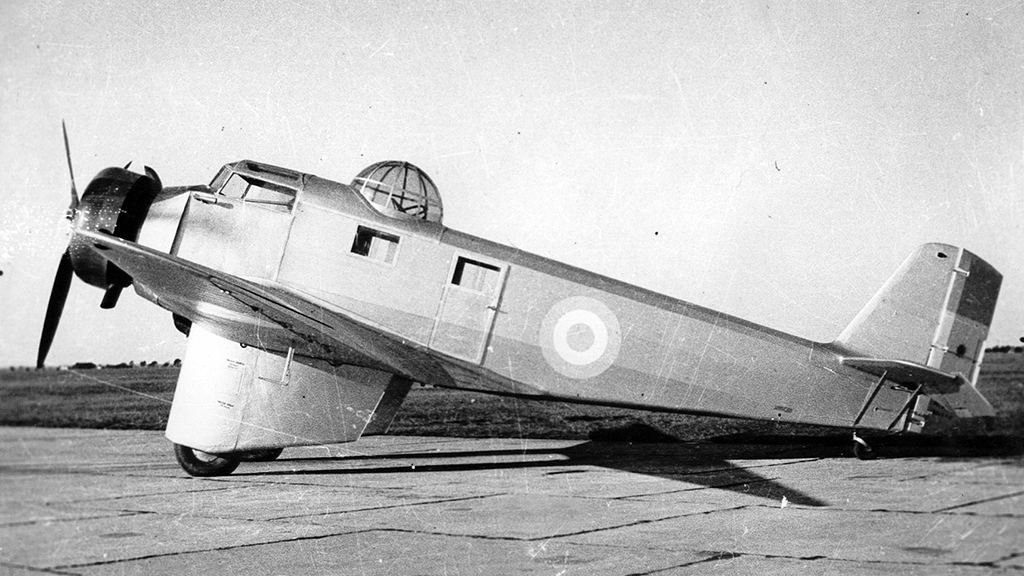
In Service
In 1936, the delivery of the Ae.M.B.1 aircraft commenced, including the prototype, which was designated with serial number 201. On March 6, airplanes numbered 202 to 209 were delivered to the 2da. División de Material Aeronáutico del Ejército (Army Aeronautical Material 2nd Division). This was followed by the delivery of aircraft serials 210 and 211 on April 10, and the final batch of planes, numbered 212 to 215, was delivered on May 20.
Initially, six of the aircraft were assigned to the Grupo de Bombardeo of the Regimiento Aéreo 3 (Bombardment Group, 3rd Air Regiment), stationed at BAM Los Tamarindos in Mendoza. The remaining aircraft were put into service with the Regimiento Aéreo 1 (1st Air Regiment) at BAM El Palomar. This distribution ensured that the Ae.M.B.1 aircraft were deployed across different locations to support military operations and strategic objectives.
During the acceptance trials, an unfortunate accident occurred on May 20 involving aircraft serial 203, piloted by Sergeant Julio Arrieta. The accident took place on the runway of FMA when the landing gear unexpectedly broke. This incident marked the first accident involving this aircraft type.
Another operational accident took place on May 2 at 11:45. Following a routine landing at BAM Los Tamarindos, Major Alfredo Perez Aquino was taxiing the aircraft, and during a left turn, airplane 207 experienced the loss of its left wheel. This was attributed to a lack of strength in the landing gear. A similar incident occurred with airplane serial 214 on June 17, when it also experienced the loss of a wheel due to landing gear issues.
The bomber aircraft, affectionately referred to as “Bombi” by the crews, faced a challenging service life primarily attributed to issues with lateral control stemming from the dorsal turret. To address this problem, modifications were made to certain aircraft, allowing the turret to be lowered into the cabin and extended when needed. The landing gear also posed difficulties due to inadequate strength in some units. Additionally, the crews expressed dissatisfaction with the airplane’s low cruise speed, which further added to the challenges faced during its operational usage.
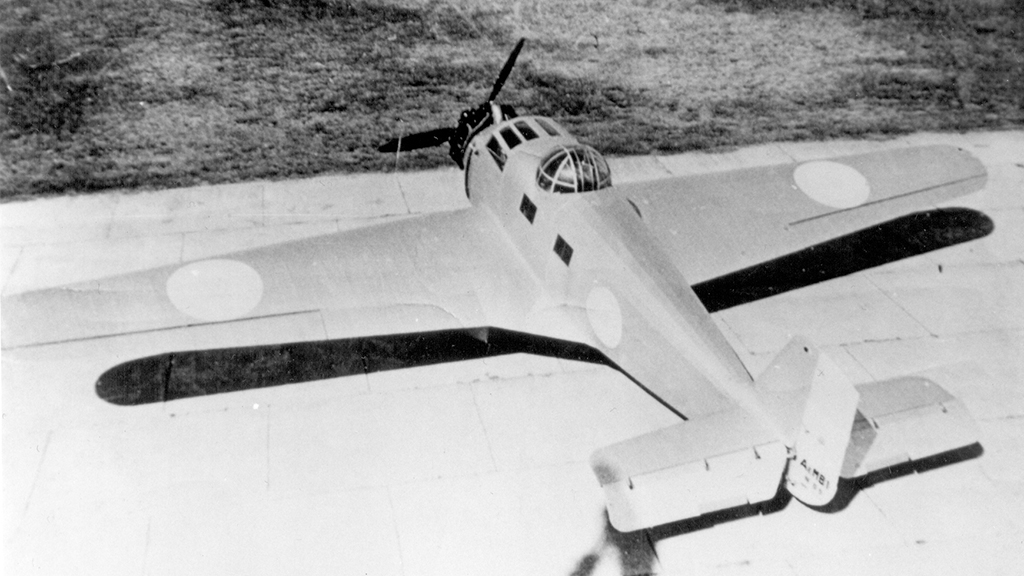
On July 9, 1936, during takeoff from El Palomar, aircraft number 210 was involved in an accident and was subsequently lost. Fortunately, the crew members managed to escape unharmed. The issues with the landing gear continued on September 21 when aircraft 207 lost its left wheel during landing. Similar incidents occurred with aircraft 203, 209, 212, and 214. These series of accidents further intensified when, on December 21, aircraft 207 crashed near Despeñaderos in the Córdoba province.
In this crash, the pilot, copilot, two observers, and the radio operator were able to parachute to safety. However, tragically, the mechanic on board the aircraft did not survive the accident. This incident marked the only fatality throughout the entire service life of the Bombi.
Just before the incident on December 21, the Ae.M.B.1 aircraft underwent an upgrade in armament. On December 17, Madsen 11.25mm and 7.65mm machine guns were acquired for the aircraft. The 11.25mm machine guns were specifically installed in the ventral position. The remaining machine guns were utilized to arm the dorsal turret, which had previously been unarmed. This upgrade aimed to provide improved defensive firepower for the Ae.M.B.1 bombers.
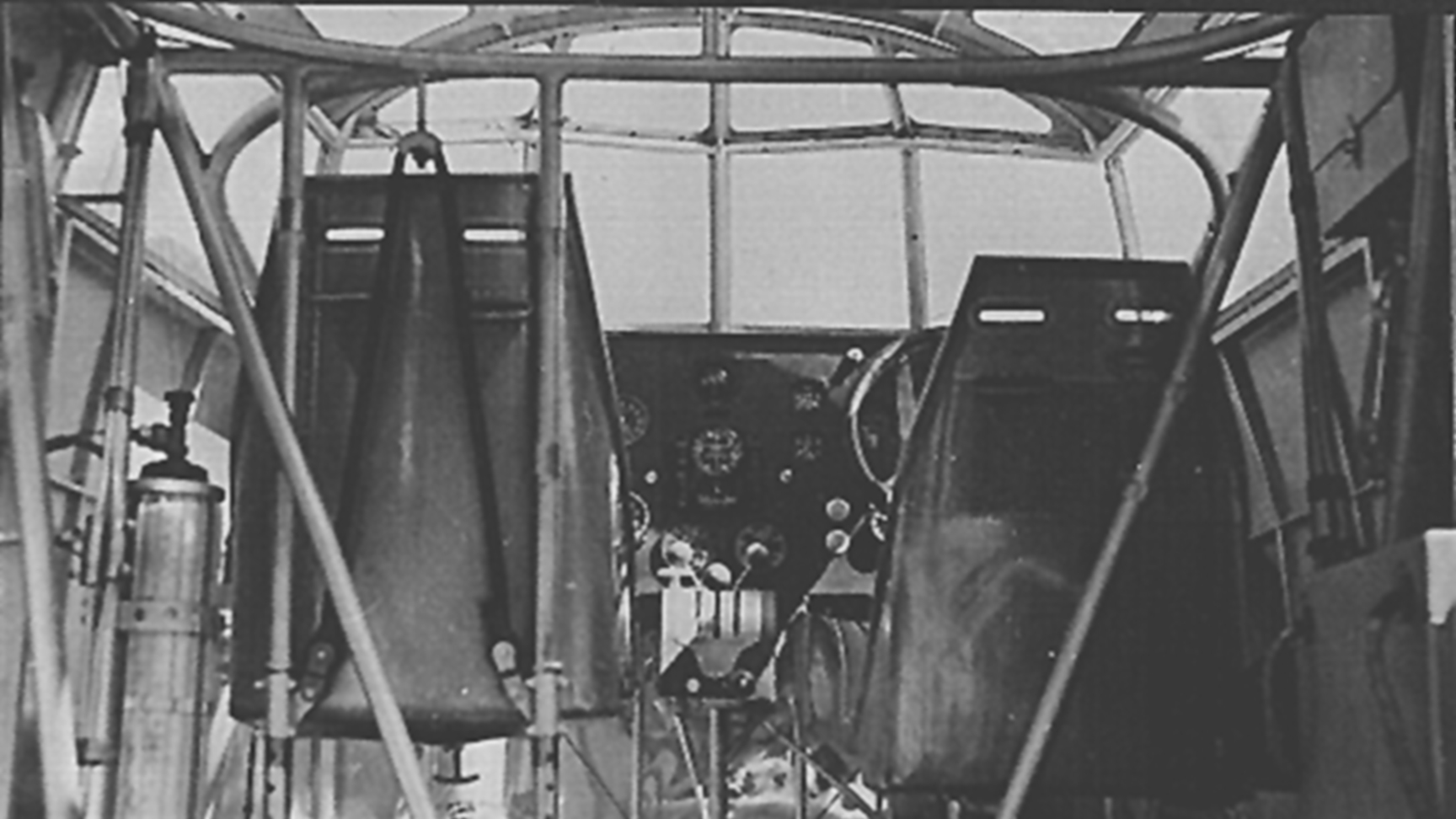
In addition to the ongoing accidents, a malfunction occurred in the landing gear of aircraft number 206 on January 12, 1937. Consequently, Reserved Order 3 was issued on March 1st, resulting in the grounding of all the Ae.M.B.1s until the landing gear issue was resolved.
On June 5, 1937, airplane serial 201 departed from El Palomar en route to Paraná, located in the province of Entre Ríos, with a planned stop at Tortugas. However, upon reaching the designated stop, they encountered technical difficulties. Consequently, they decided to land on the runway at the town of Galvez, where they refueled and resumed their journey at 17:10. The aircraft was manned by Sergeant 1st Class Pelliza, Sergeants Algarate and Abrallay, and Corporal 1st Class Maciel. During their attempt to land with poor visibility after sunset, they crashed at 18:30, approximately 500 meters short of the runway due to an incorrect estimation of altitude. The engine detached from the aircraft and was found a few meters away, while the crew sustained injuries. Sadly, the Bombi prototype was destroyed and considered irreparable, resulting in a reduction of available units to twelve.
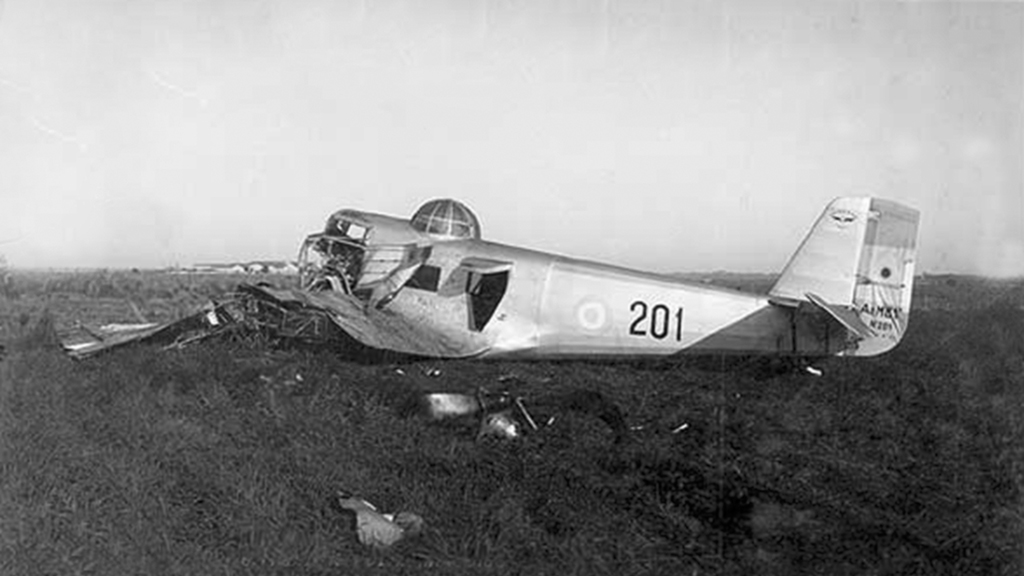
Nevertheless, on July 9th, during the Independence Day celebrations, a remarkable flypast took place, involving a total of 112 planes from the Army, including all twelve Bombis. This event marked the sole occasion when the Ae.M.B.1s participated in a formation flight together.
From Ae.M.B.1 to Ae.M.B.2
Because of the accidents, authorization was granted on February 5, 1938, to carry out modifications on the airplanes, resulting in a change of designation from Ae.M.B.1 to Ae.M.B.2. The focus of the modifications was to address the landing gear issue, which required replacing them along with their wheel pants. Additionally, adjustments were made to the fuel tanks, and an emergency door was installed. To address the problem of poor lateral control and the constant damage to the carriage where they rested, caused by the Madsen machine guns recoil, the turret was removed, leaving only the ventral 11.25mm machine gun as the sole defensive weapon. The door was enlarged and redesigned into a rectangular shape, opening sideways instead of upwards. This modification enabled faster evacuation of the aircraft during emergencies.
Throughout the year, modifications were carried out on nine airplanes from Regimiento 1 de Observación y Bombardeo (1st Observation and Bombardment regiment) stationed at El Palomar. However, only aircraft serials 208, 209, 211, 212, and 213 were operational. On October 8, 1938, BAM Villa Mercedes was established in the city of the same name, located in the province of San Luis. One year later, Bombis 208, 209, 211, 212, and 213 were transferred to BAM Villa Mercedes to become part of the Grupo de Observación (Observation Group.) The aircraft 212 was directly transferred from FMA. At that time, aircraft numbered 204 and 214 were still undergoing modifications in the workshop.
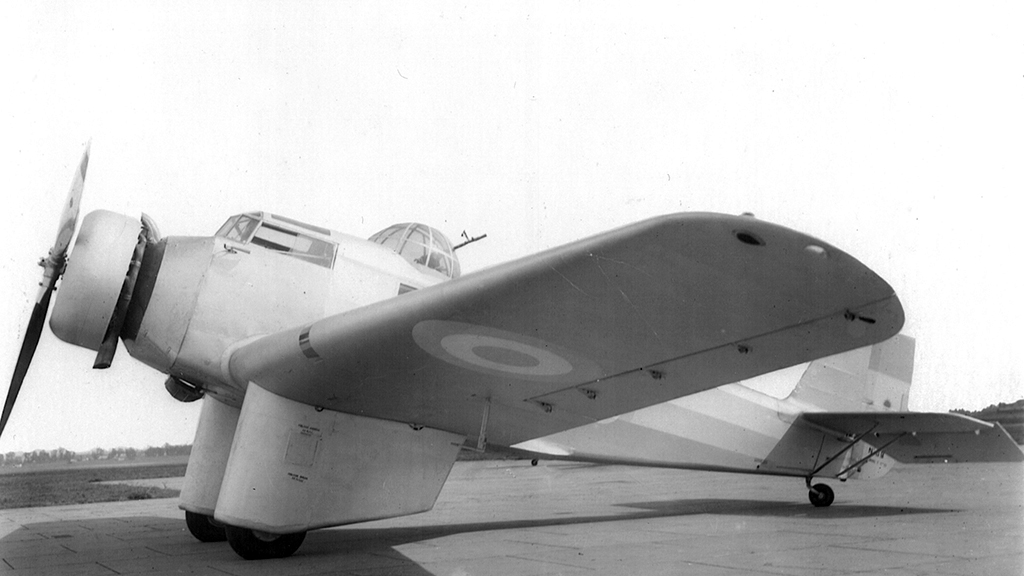
Early in that year, the aircraft serial 215 was sent to Regimiento 2 de Caza (2nd Fighter Regiment) in Paraná. This unit was in the process of receiving the new Curtiss Hawk III and Hawk 75-O aircraft. However, the Bombi served only temporarily with that unit before being transferred to the Grupo de Observación. Meanwhile, the Grupo de Bombardeo Liviano of Regimiento 3 (3rd Regiment’s Light Bomber Group) in Mendoza operated with aircraft serials 202, 203, 205, and 206. However, the aircraft 206 was later relocated to Villa Mercedes.
On September 7, 1939, the unfortunate streak for these aircraft persisted as the airplane serialled 215 was lost during its flight from El Palomar to its base in Villa Mercedes. Due to heavy rain, the pilot attempted an emergency landing in a field near the town of Soler, located in the province of Córdoba. Tragically, the aircraft collided with a windmill, resulting in its destruction. The crew members sustained injuries in the incident.
On November 22, BAM Villa Mercedes underwent a name change and became BAM Coronel Pringles. The base was placed under the command of Major Enrique Guntsche. By the end of the year, the modification trials for the Ae.M.B.2 aircraft were completed. Aircraft numbers 202 and 203 remained at Mendoza, while aircraft serials 205, 206, 208, 209, 211, and 213 were stationed at Pringles. Aircraft 212 was still located at FMA, and aircraft 204 and 214 remained out of service.
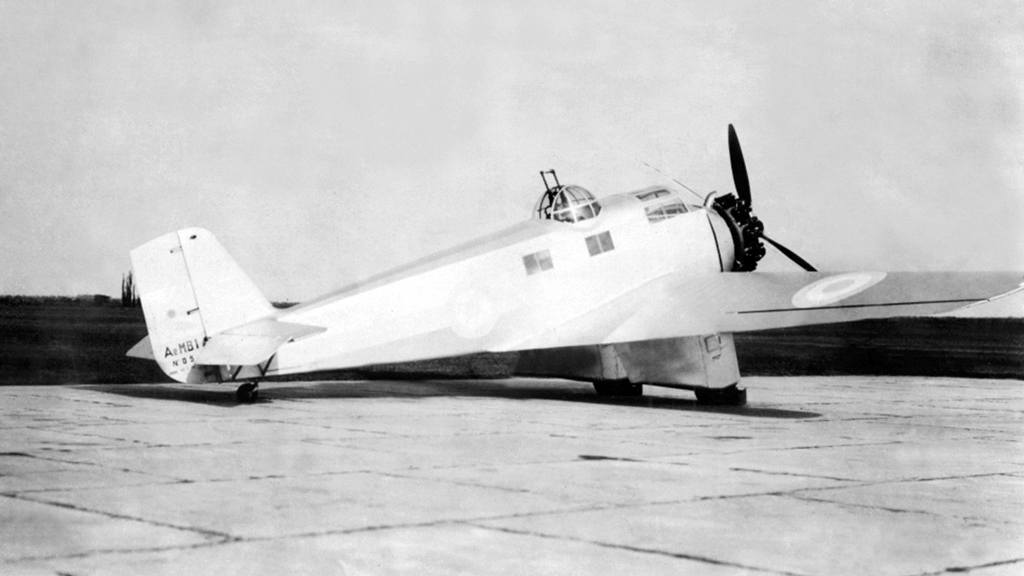
Not a bomber anymore
In 1940, the Bombi aircraft with the designation number 212, which was still located at FMA, underwent a notable transformation in its role. It was involved in a total of 122 paratrooper jumps, introducing a new and innovative application for these aircraft. This development led to a gradual transition of the Bombis away from their previous bombing duties. Instead, they were being replaced by other aircraft, specifically the recently acquired Northrop 8A attack planes, totaling thirty in number, and twenty-two Martin 139 WAA (B-10) bombers. These foreign-made airplanes demonstrated superior performance and capabilities, making them more suitable for attack and bombing missions compared to the Ae.M.B.2 Bombis.
The large fuselage of the Argentine airplane, on the other hand, proved to be well-suited for various additional roles such as observation, paratrooper transport, liaison, and utilitarian missions. Although its primary focus shifted, the aircraft still maintained a secondary offensive capability. The decision to acquire imported attack and bomber airplanes, in addition to the Curtiss Hawk fighters, was motivated by the persistent difficulties encountered with domestically developed aircraft. These challenges were largely attributed to a lack of experience in construction and, in many instances, limited familiarity with the operational utilization of prototypes.
In 1940, except for aircraft serials 205 and 206, which were in storage at Mendoza, all other Bombis were assigned to BAM Coronel Pringles, including aircraft 204 and 214, which were brought from FMA after completing their modifications.
On April 18, 1940, Regimiento 1 de Bombardeo (1st Bombardment Regiment) was transferred from El Palomar to Coronel Pringles once the B-10s were deemed operational. The Bombis became part of this unit until the end of the year, when they were then sent to Regimiento Aéreo 3 (3rd Air Regiment), alongside the Northrop 8As.
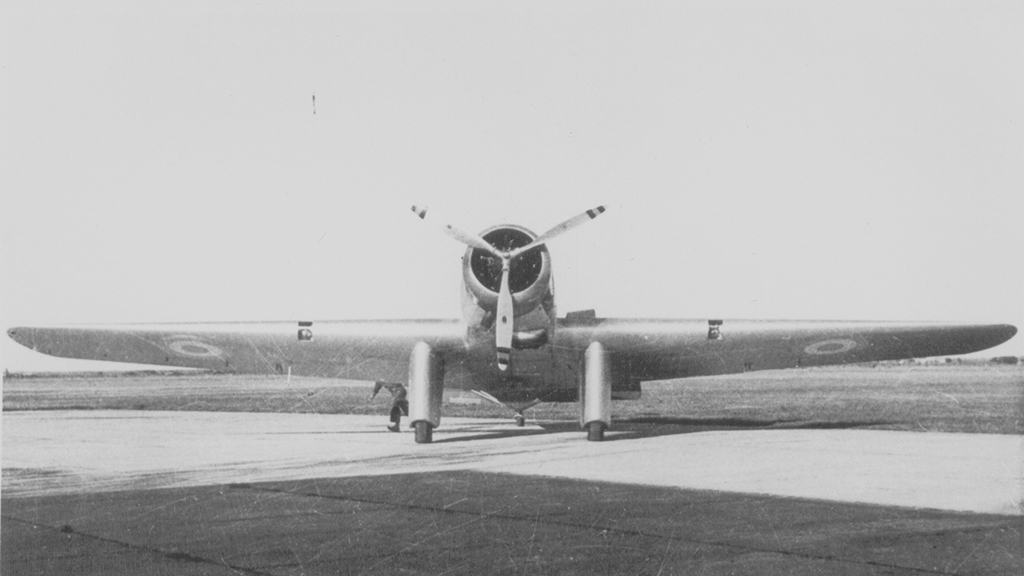
Due to their perceived age, the Bombis were temporarily placed out of service by an order from the Comando de Aviación del Ejército (Army Aviation Command), along with the Ae.M.O.1 and the Avro Trainers. However, in August, three of them were reintroduced into service and resumed flying.
In 1941, aircraft serial 204 suffered an accident and was written off. The following year, the remaining airplanes were transferred to Grupo 1 de Observación, which relocated its base from El Palomar to Paraná. However, aircraft number 212 was sent to the Agrupación de Entrenamiento (Training Group), which was established on January 16, 1942, at El Palomar for training purposes.
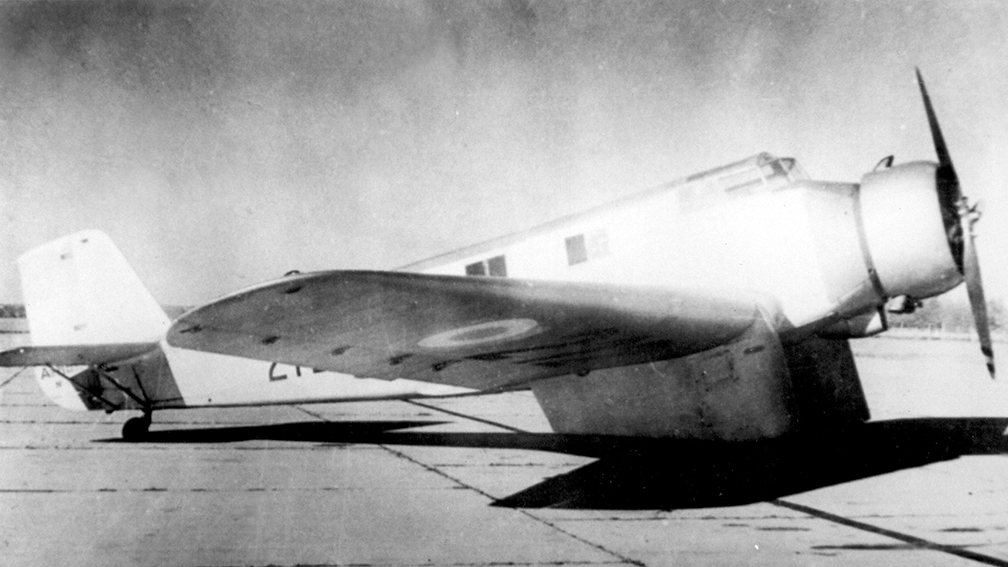
During 1942, aircraft serials 202, 203, 205, 206, 208, and 214 arrived at Grupo 1 de Observación. Aircraft number 206 remained at Regimiento 3 in Mendoza, along with 209 and 211. Upon their arrival in Paraná, the Bombis were equipped with a hood for instrument flight training and K3B photographic cameras. That year marked the first without any accidents, and the airplanes started finding their role in Argentine military aviation, not as bombers, but as valuable assets for observation and general utility purposes. On October 21, a significant observation exercise took place, in which the Bombis participated.
With the Grupo 1 de Observación
On June 10, 1943, the aircraft serial 209 arrived from Mendoza. However, by the end of the year, the aircraft carrying the number 213, which was already out of service, was officially written off, resulting in a reduced fleet of only nine Bombis. These remaining aircraft were equipped with new radio equipment.
In 1944, Grupo 1 de Observación began the year with aircraft serials 205, 208, 209, 211, and 214 in service. Additionally, aircraft serials 202, 203, and 212 were added to the group. During this year, the Bombis were utilized for navigation, observation, radio communications training, and for aerial photography. To enhance communication capabilities, the aircraft were outfitted with wireless sets, enabling the pilot and co-pilot to communicate via radio.
In that year, Reserved Order 58 was issued, which led to the change in serial numbers for all Army Aviation airplanes. The new system included a letter preceding the numbers, indicating their mission designation. For bombers, the letter B was used, while the letter C represented fighters. This system has been in use by the Argentine Air Force until the present day. The Ae.M.B.2 aircraft, being observation planes, received the letter O in their serial numbers. As a result, they were designated as O-202, O-203, O-205, O-206, O-208, O-209, O-211, O-212, and O-214 respectively.
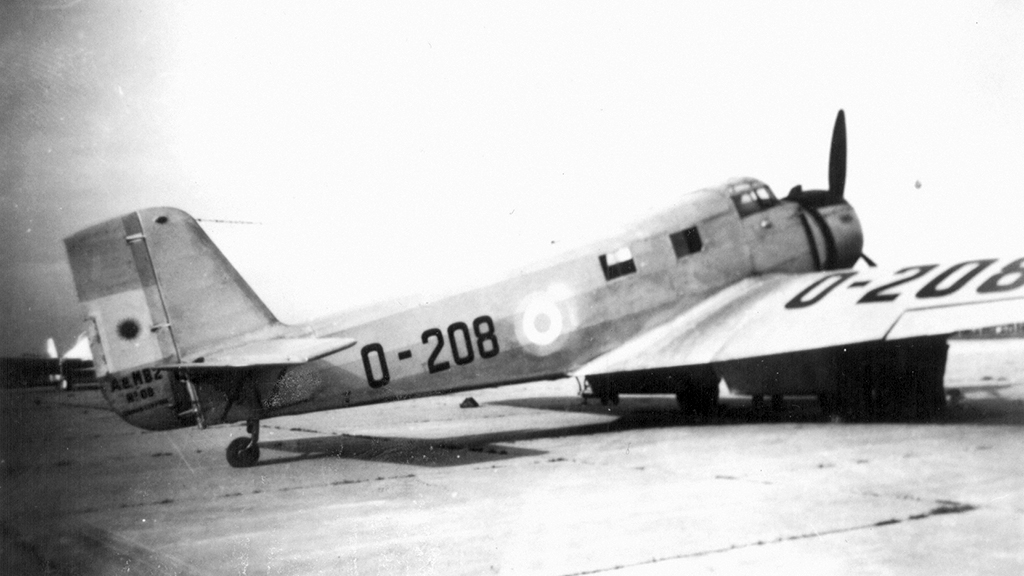
As an illustration of the extensive participation of these airplanes in exercises throughout their operational lifespan, it is worth noting that they were occasionally adorned with colored bands over their silver finish. For instance, between October 16, 1944, and November 3, the aircraft serials O-205, O-208, O-209, and O-214 took part in the final exercises of the 4th and 5th Army Divisions at Pampa de Olaén. During this exercise, they flew alongside two FMA/Focke Wulf Fw-44J Stieglitz aircraft. Additionally, between October 16 and November 5, the O-202 and O-203 aircraft, along with other planes, participated in the end-of-year exercise of the 3rd Army Division in Entre Ríos province. These exercises showcased the versatility and involvement of the Bombis in various military operations.
In 1944, the aircraft serial 211 was transferred to the newly established Escuela de Tropas Aerotransportadas (Airborne Troops School) located in Córdoba. This school had been inaugurated on October 11, 1943. The Bombi serial 211, along with the Ae.M.S.1 aircraft, conducted the initial paratrooper jumps for the unit. These jumps involved carrying five paratroopers who were seated on the floor of the aircraft. The Bombis were later joined by the Junkers Ju-52/3m aircraft with the serial number T-152, further expanding the airborne capabilities of the unit.
Near the End
In 1945, significant changes occurred as the Fuerza Aérea Argentina -FAA- (Argentine Air Force) was established, leading to the transfer of all Army Aviation units and their aircraft to the newly created air arm. The Bombis also underwent transfers to FAA squadrons, as their role in observation duties was gradually taken over by the new FMA IAe DL-22 aircraft. The plan was to utilize the DL-22 as a replacement for the Ae.M.Oe.2, Ae.M.B.2, Fw-44J, and Avro Trainer aircraft.
During that same period, the airplane serial O-211 remained in service at the Escuela de Tropas Aerotransportadas together with the Ae.M.S.1. Despite facing criticism from paratroopers due to limited space, a small door, and a door lintel over the floor, efforts were made to enhance the capabilities of the Bombis for paratrooper operations. In line with this, the aircraft serials O-205 and O-208 were sent to the FMA for modification specifically tailored to their new role. These changes marked yet another transition period for the Bombis as they adapted to new roles within the evolving aviation landscape of Argentina.
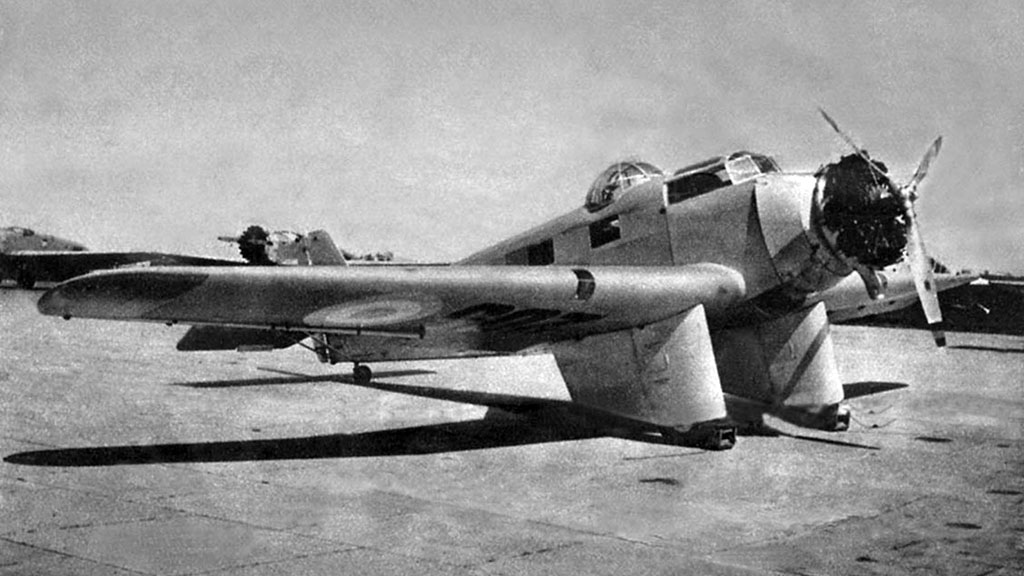
In the reorganization process during 1945, the airplane serial O-202 was assigned to BAM Coronel Pringles and equipped with a Telefunken Stat 274AF radio system, similar to the one used in the Northrop 8 aircraft. The newly established BAM Reconquista in Santa Fe province received the airplane number O-209, although operations were limited due to difficulties in obtaining spare parts.
Meanwhile, Grupo 1 de Observación was equipped with the aircraft serials O-202, O-203, O-206, and O-214. Among them, the Bombi O-214 was utilized for target towing purposes during flak exercises in 1945. This highlights the diverse range of tasks undertaken by these airplanes, as they were employed in various roles such as observation, communication, and target towing, demonstrating their adaptability and utility in different scenarios.
In a further adaptation of the Bombis, three aircraft were sent to the Agrupación Entrenamiento at El Palomar, where they underwent modifications to serve as crop dusters. These aircraft were equipped with specialized equipment installed in the ventral opening, enabling them to participate in the fight against grasshoppers. They performed this role for a period of time before returning to Grupo 1 de Observación on February 21, 1946, as the equipment was then installed on Avro Trainers for continued crop-dusting operations.
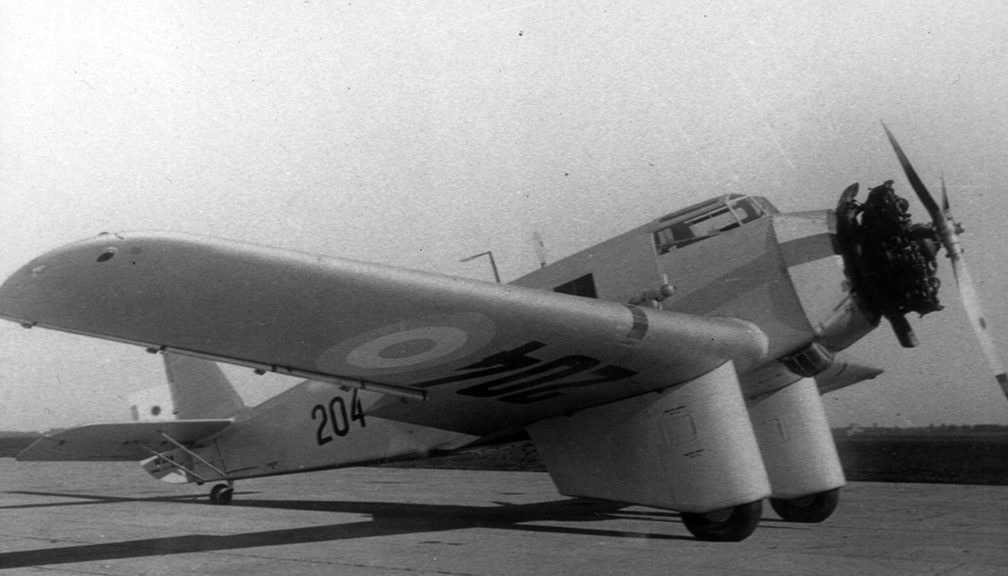
Meanwhile, the airplane serial O-206, which was still out of service, was transferred to the Dirección de Institutos Aeronáuticos Militares (Directorate of Military Aeronautics Schools) for ground training purposes. Similarly, the Bombi O-208 was transferred as a training aid to the Escuela de Clases y Especialidades (School of Non-Commissioned Specialties, basically an aviation mechanics school) in Córdoba and never flew again. On July 17, the airplane O-214 was also sent to the same location but was ultimately written off in 1947. Last, but not least, the airplane serial O-205 aircraft was also rendered inoperative and did not take to the skies again. Instead, it was repurposed for ground training duties by the paratroopers. Meanwhile, the Bombi O-211 continued its flight operations, accompanied by O-214. In 1946, the airplane O-212 had a minor accident at BAM Cnel. Pringles. This airplane was similarly equipped with the Telefunken radio. These transfers and retirements reflect the evolving roles and shifting priorities within the military aviation landscape during that period.
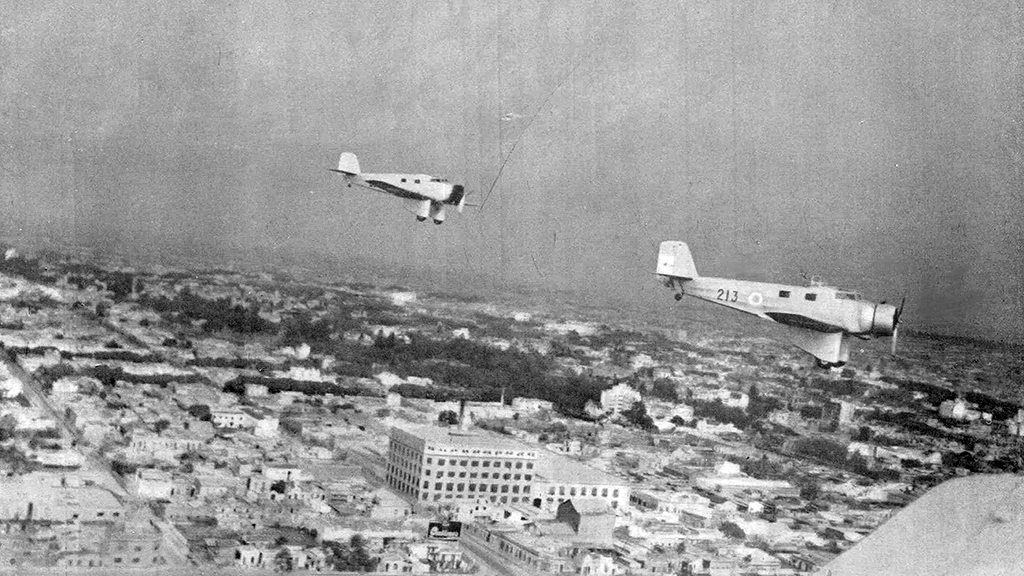
Farewell
By February 1947 the airplane serial O-212 was still flying with Grupo 1 de Observación, while O-211 was written-off together with the aircraft O-202, O-205 and O-209; then, on 13 October, the Bombi serial O-203 had an accident and was sent to the FMA for repairs. By the end of that, year Grupo 1 de Observación indicated that the Ae.M.B.2 and Ae.M.Oe.2 were not needed anymore because they had more modern material like the DL-22, Taylorcraft and the IA-20 El Boyero.
In 1948, the Bombi O-203 remained out of service since there were no replacement engines and was eventually written off, along with the airplane serial O-212, which was the last operational Bombi aircraft, marking the near-closure of this era. Nevertheless, one of the airplanes from the Córdoba Parachute School had its fuselage mounted on a structure, allowing students to practice jumps. As of 1970, this fuselage was still present at the Army’s Paratrooper Infantry Regiment 2, but it was later replaced by an aluminum structure that retained the name “Bombi” until today, even though its origin is nearly forgotten by most. The Bombi was an honorable aircraft that represented the pinnacle of design for FMA in the 1930s decade, albeit it arrived somewhat late and faced typical challenges encountered by an industry with limited experience.




